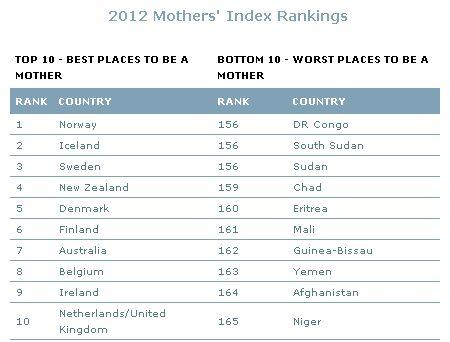
In its thirteenth annual 'State of the World's Mothers report', Save the Children – an independent organisation that works for children – has compared 171 million children globally from 165 countries to find out the best and worst places to be a mother.
The findings in the report were based on six key nutrition solutions that are affordable even in the world's poorest countries.
The 'State of the World's Mothers' 2012 report ranks Norway at number one - the best place to be a mother, while Niger was ranked last and as the worst place to be a mother.
India, which comes under tier II – Less developed countries ranks 76, while neighbouring Pakistan ranks 78.
China ranks 14, while Sri Lanka 42.
Afghanistan which falls under tier III - Least developed countries - ranks 41.
US, which comes under tier I - More developed countries - ranks 25.
...
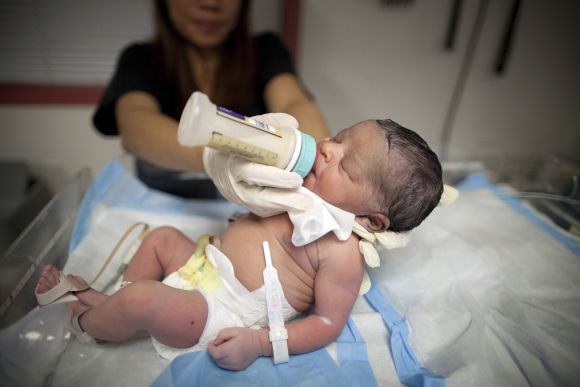
Why Norway ranks number one?
Norway tops the 'Breastfeeding Policy Scorecard' ranking. According to the report Norwegian mothers enjoy one of the most generous parental leave policies in the developed world.
Mothers in the country can take up to 36 weeks off work with 100 percent of their pay, or they may opt for 46 weeks with 80 percent pay (or less if the leave period is shared with the father)
Norway is ranked number one as it performed better than other countries in the rankings on all indicators. It ranks among the top on contraceptive use, female education and political representation. It also has the highest ratio of female-to-male earned income and the second lowest under-5 mortality rate in the developed world.
Why is Niger last?
Niger underperformance across all indicators compared to other countries in maternal and child health. Levels of maternal mortality and education, contraceptive use, women's income relative to men's, as well as primary school enrollment and rates of child malnutrition are among the worst in the world.
...
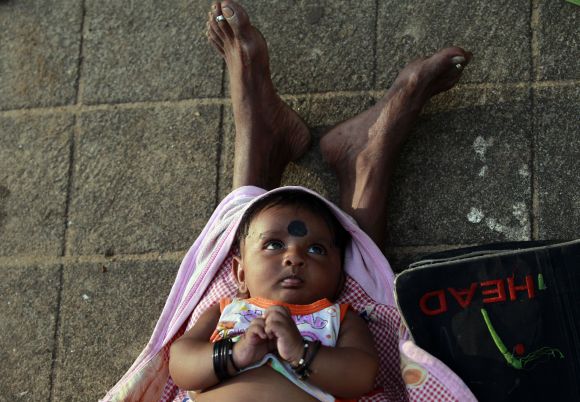
Key findings in the report say that nutrition is one of the prime reasons why mothers and children are either better or worse off in countries.
The report, however, says that economic growth is not enough to fight malnutrition. Political will and effective strategies are needed to reduce malnutrition and prevent stunting.
India which comes under tier II Less developed countries has a GDP per capita of $1,500 and 48 percent of its children are stunted. On the other hand Vietnam where the GDP per capita is $1,200, the child stunting rate is 23 percent.
The report states that over 40 percent of children under age 5 suffer from malnutrition in Bangladesh, India, Madagascar, Niger and Yemen.
Four countries – Afghanistan, Burundi, Timor-Leste and Yemen – have stunting rates close to 60 percent. In both Somalia and Afghanistan, war and conflict have likely played a significant role in stunting rate increases.
After two years as the worst place in the world to be a mother, Afghanistan has moved up one notch on the Mother's Index in 2012. According to the report, the country has made noteworthy improvements in maternal and child health and well-being.
...
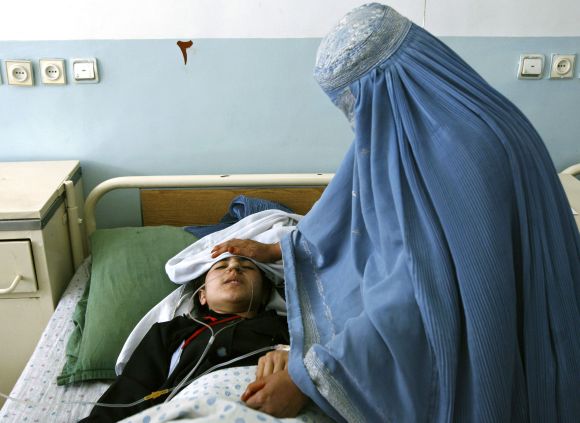
"The report looks at the critical 1,000-day window of time from the start of a woman's pregnancy to her child's second birthday."
"It highlights proven, low-cost nutrition solutions – like exclusive breastfeeding for the first six months – that can make the difference between life and death for children in developing countries," says Carolyn Miles president and CEO Save the Children USA.
The report examines how investments in nutrition solutions make a difference for mothers, children, communities, and society as a whole. It also points to proven, low-cost solutions that could save millions of lives and help lift millions more out of ill-health and poverty
Out of 73 developing countries, which together account for 95 percent of child deaths, only four score "very good" on measures of young child nutrition.
In the industrialised world, the United States has the least favorable environment for mothers who want to breastfeed.
...
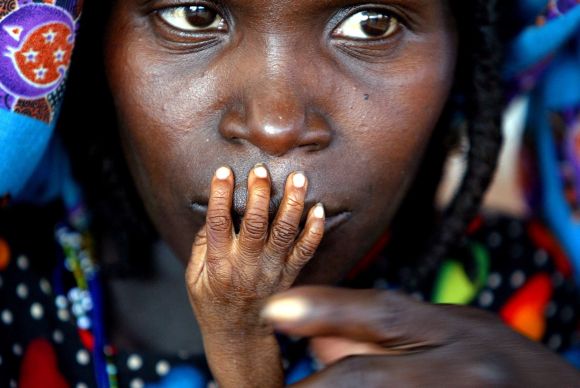
Recommendations:
- Invest in proven, low-cost solutions to save children's lives and prevent stunting.
- Invest in health workers – especially those serving on the front lines – to reach the most vulnerable mothers and children.
- Help more girls go to school and stay in school.
- Increase government support for proven solutions to fight malnutrition and save lives.
- Increase private sector partnerships to improve nutrition for mothers and children
- Improve laws, policies and actions that support families and encourage breastfeeding.
...